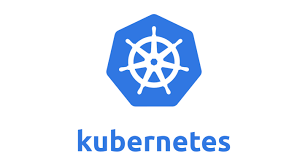Kubernetes Interview Questions
 Ritul Gupta
Ritul Gupta3 min read
Table of contents

What is Kubernetes and what are its main components?
Kubernetes is an open-source container orchestration platform that automates the deployment, scaling, and management of containerized applications. The main components of Kubernetes include Master Node, Worker Nodes, Pod, ReplicaSet, Deployment, Service, Namespace, Volume, ConfigMap, and Secret.
How does Kubernetes facilitate container orchestration and management?
Kubernetes facilitates container orchestration and management in several ways: Automated deployment, Self-healing, Load balancing, Horizontal scaling, Rolling updates and Rollbacks, and Resource management.
What are the benefits of using Kubernetes for container deployment?
There are many benefits to using Kubernetes for container deployment, including Scalability, High Availability, Portability, Resource Efficiency, Easy Deployment, and Security.
What is a Kubernetes pod, and how is it different from a container?
In Kubernetes, a pod is a smallest and simplest unit in the object model. The key difference between a pod and a container is that a pod can host one or more containers, while a container can only run a single application or process.
What is a Kubernetes service, and how does it facilitate communication between pods?
A service provides a stable IP address and DNS name for a set of pods, which allows other pods or services to communicate with them reliably, even as the set of pods changes over time. There are several types of Kubernetes services, but the most common type is a ClusterIP service, which provides a virtual IP address that is accessible only from within the cluster.
How do you deploy an application on Kubernetes?
The process involves the following steps: 1. Create a Docker image of your application 2. Create a Kubernetes deployment object that describes the application and how many replicas should be running 3. Create a Kubernetes service object that defines how the application can be accessed 4. Deploy the application to a Kubernetes cluster using Kubectl.
What is a Kubernetes deployment, and how does it help manage application updates?
Deployment allows you to define and manage a set of replicas of your application and provides features to update and roll back to previous versions of the application. A Kubernetes Deployment provides several benefits for managing application updates, including Declarative updates, Rollout updates, Scaling, Versioning, and Self-healing.
What are Kubernetes labels and selectors, and how are they used to manage resources?
In Kubernetes, labels and selectors are key concepts used to manage and organize resources. Labels are key-value pairs that you can attach to Kubernetes objects such as pods, services, deployments, and nodes. Selectors are used to filter resources based on their labels. For example, you might use a selector to select all the pods that have the label "app=example", and then apply a rolling update to those pods to update your application.
How does Kubernetes handle load balancing?
In Kubernetes, load balancing is handled by a combination of the Kubernetes Service object and the underlying cloud provider's load balancer. When we create a Service with a LoadBalancer type, Kubernetes will communicate with the underlying cloud provider to create a load balancer. The load balancer will then route traffic to the set of pods that the Service is targeting.
What are Kubernetes ConfigMaps and Secrets, and how are they used to manage configuration data?
ConfigMaps are used to store non-sensitive configuration data as key-value pairs. Examples of configuration data that can be stored in a ConfigMap include environment variables, command-line arguments, and configuration files. Secrets, on the other hand, are used to store sensitive information such as passwords, API keys, and TLS certificates. Both ConfigMaps and Secrets can be used to provide configuration data to Kubernetes pods and deployments. They can be mounted as volumes in a pod's container, allowing the container to access the configuration data as files or environment variables.
Thank you!!
0
Subscribe to my newsletter
Read articles from Ritul Gupta directly inside your inbox. Subscribe to the newsletter, and don't miss out.
Written by

Ritul Gupta
Ritul Gupta
Packaged App Development Associate @ Accenture | Infrastructure Engineering | Exploring Cloud & Security